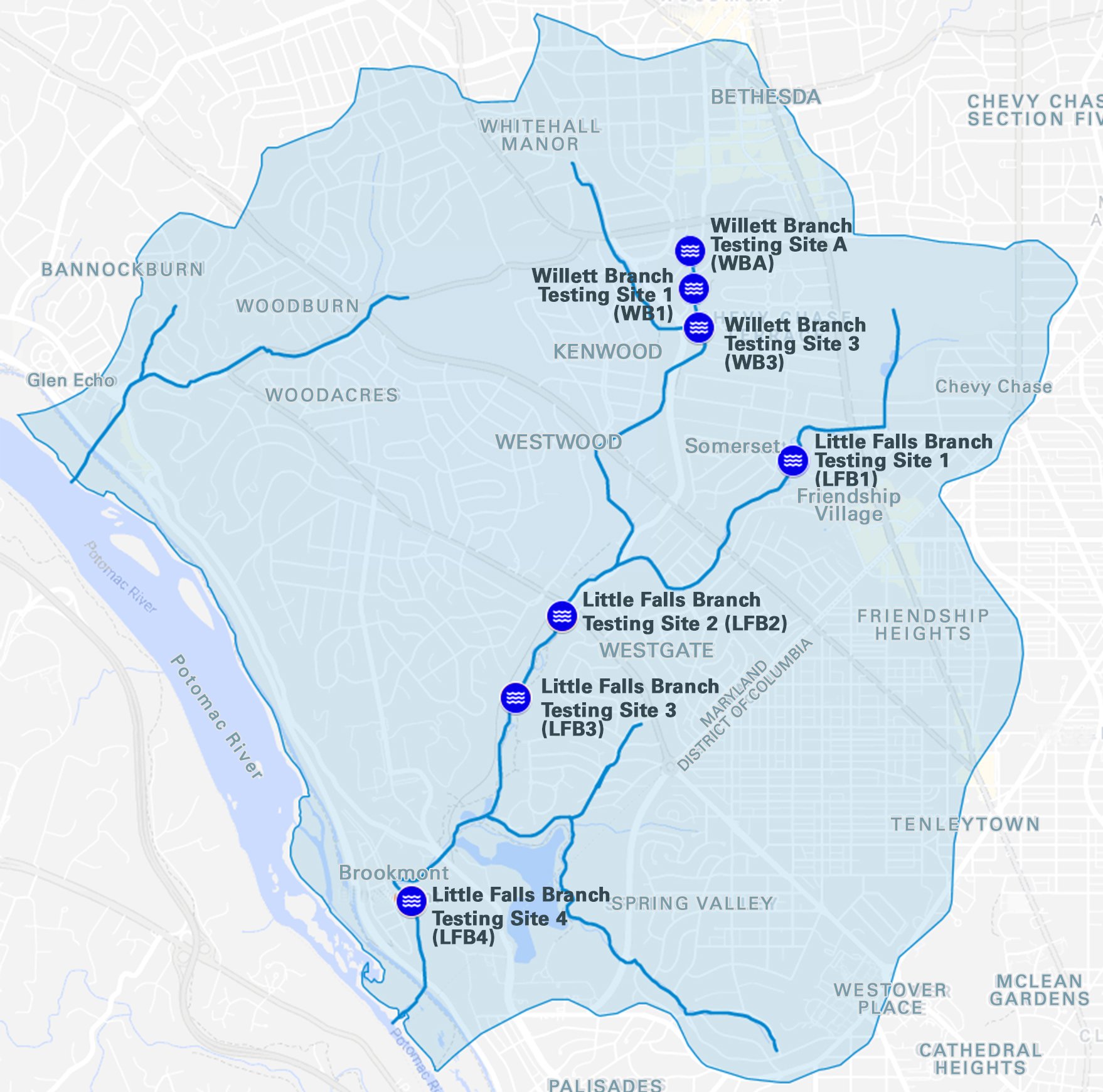Joe Barnes and Woody Stanley meet to hand off samples to take to the lab.
On September 14, LFWA conducted our final fecal bacteria test for the year. The program, which was intended to assess the safety of the main creeks in our watershed for water play, started on June 1. For the next 16 Wednesdays, we tested seven locations along the Willett and Little Falls branches. The samples were sent to Anacostia Riverkeeper's water quality lab for analyses. Volunteers also took temperature and pH readings at all the sites. Although the results at each site varied from week to week with some sites passing and some failing to meet the MD Standards for safe water play, when we analyzed the data for average fecal count over the course of the testing period, we found that only one site, near the Somerset Pool, that met the MD "geometric mean standard" - or the average of all test for the site over a 90-day period.
The Willett Branch failed week after week with counts more than 2,400. The Little Falls Branch below Mass Ave also failed every week (site LFB2 and LFB3) but with much lower numbers.
The final report on the project and the water quality of the Little Falls and Willett Branches is HERE.
Willett Branch has High Levels of Human Markers
In an effort to understand the source of the high levels of E. Coli on the Willett Branch, we ran two DNA based tests (qPCR) on two sites on the creek - behind the Bethesda Pool where it emerges from under the Capital Crescent Trail and downstream near the confluence of the Glenbrook Tributary (sites WBA and WB3) These tests were sent to the Jonah Venture Lab for analysis. These test came back with “crazy high” numbers of human markers, which the lab explained were most likely from human wastes in the very high E. Coli count.
Next Steps
We have shared our results with the Washington Suburban Sanitary Commission (WSSC) and are working with them to further test the creeks for human markers. This is the first step in understanding the source of these high numbers can be and how to solve the problem.
Thank you to Our Citizen Scientists
Every one of our samples was collected by a volunteer went out each Wednesday morning to sample. Their dedication to the program is the reason that we were able to have such a comprehensive picture of the fecal bacteria problem in our creeks. Thank you to the whole bacteria monitoring team for your stewardship. And thank you to Joe Barnes who ran the program for us this year.
Please visit our bacteria monitoring page for a report on our findings as well as to view the data and trend charts.


